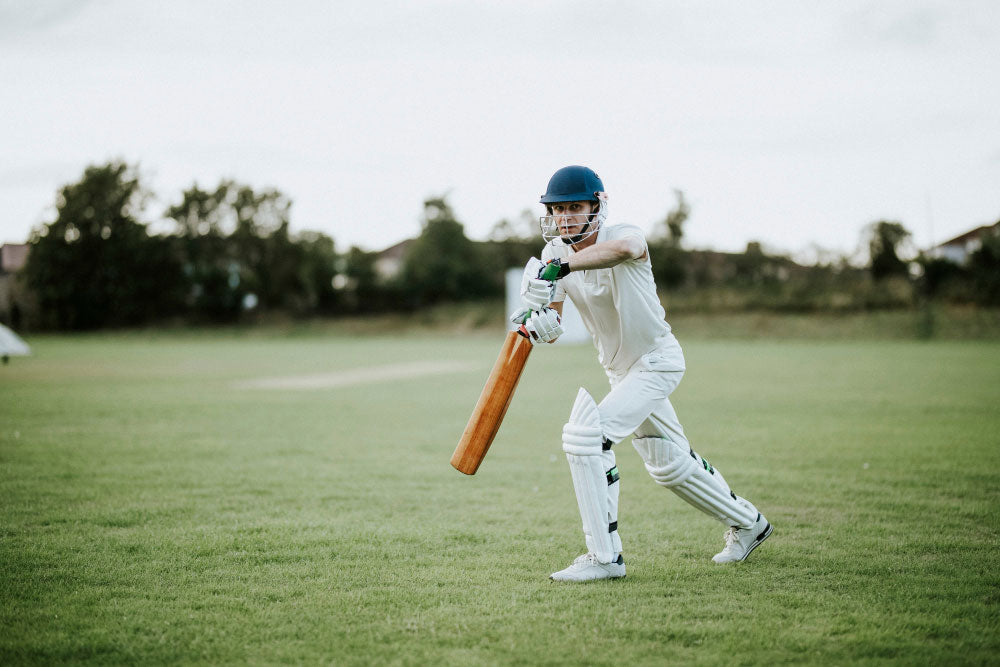Wicket-keeping is an essential role in cricket, and the importance of the wicket keeper’s safety cannot be overstated. It is a demanding job that requires great agility, reaction speed and bravery to protect the batsman from the fast-moving balls delivered by the bowlers. A helmet is a vital piece of safety equipment for the wicket-keeper, providing protection from hard-hitting balls and giving the keeper the confidence to stand up to the stumps. This article will explore why a helmet is such an important piece of protective equipment for the wicket-keeper and how it can help improve their performance on the field.
The importance of wicket-keeping safety
The wicket-keeper must be safe while batting. Their job is to protect the batsman from the fast-moving balls bowled by the bowlers. The main safety piece of equipment for a wicket-keeper is the helmet, which protects the head and neck from injury. The laws of cricket prohibit the batsman from getting inside the wicket-keeper’s helmet, so a wicket-keeper has complete freedom to move about behind the stumps but must always keep the batsman safe. When batting in a team, the wicket-keeper must have the confidence to stand up to the stumps and face the fast-hitting balls bowled by the fast bowlers. This confidence can come from a good fit, proper padding and a reliable helmet that provides good protection. A helmet that is too big can result in the wicket-keeper feeling restricted and less confident.
What is a wicket-keeper’s helmet?
A wicket-keeper’s helmet is a piece of head protection worn by the wicket-keeper to protect the head and neck from injury when batting. The helmet is typically made of metal, plastic or composite material and is designed to look like a stump. It is made to withstand the rigors of being hit by the cricket ball, but it must also protect the wicket-keeper’s head and neck from injury during normal movement. Helmets are classified by the level of protection they offer. The most protective level is ‘A’, followed by ‘B’ and finally ‘C’. A helmet with a ‘C’ rating is designed to give good protection from low to medium impact, while a ‘B’ helmet is designed for high impact and an ‘A’ helmet is designed for low impact.
The benefits of wearing a helmet
- Satisfies the law - Helmet use is mandatory for all forms of cricket, but can be modified for less dangerous forms of the sport.
- Better protection for the wicket keeper - Protection from the high-impact balls delivered by the bowlers, good clarity to hear the calls from the fielders and protection from injuries when batting.
- Increased confidence - A good fit can provide the confidence needed to stand up to the stumps, as well as hear and see clearly to make accurate decisions.
- Better visualisation - The padding in a good helmet can help wicket-keepers use their hands better and feel the ball more easily.

Different types of helmets
- Full-face helmets - Full-face helmets are designed to provide complete protection for the head and neck. They are the most protective type of helmet and are usually worn by goalkeepers.
- Floppy hats - These are made from a soft material and are typically used for practice or recreational cricket. They are not designed to protect the head and neck from injury, so the wicket-keeper must wear eye protection.
- Soft caps - These are typically made from a soft plastic material and are designed to protect the head and neck, but not the jaw. They are the least protective type of helmet but are often used as a second choice option if a full-face helmet is not available.
Regulations for helmet use
- Players must wear a helmet at all times while batting and wicket-keeping. A helmet can be removed during a dead ball situation like a no ball or if the glove is removed to deliver the ball.
- If a helmet is removed during a match, the player must put it back on before delivering the ball.
- All helmets must be approved by the designated body and can be identified by a sticker.
How a helmet can improve wicket keeping performance
Most cricketers will not wear a helmet because they feel it makes them look clumsy. Wicket-keeping is an important position on the field, but it is often overlooked. If a wicket-keeper wears a helmet, it can help them stand up to the stumps more confidently and feel more connected with the ball. This can improve the decision-making process and allow the wicket-keeper to make better decisions during the game. When wearing a helmet, wicketkeepers can use their hands to feel the ball more easily and be more accurate with their feet while blocking and catching. In addition, helmets can be a great fit and help reduce injury risk, so the wicket-keeper can spend more time focusing on their game.
Conclusion
Wicket-keeping is an important role in any team, but it is often overlooked and undervalued. Wicket-keepers must feel confident to face the fast-moving balls delivered by the bowlers while also wearing protection from the hard-hitting balls. This can be difficult to do when wearing a traditional helmet designed for batting. A good wicket-keeper’s helmet can help wicket-keepers stand up to the stumps more confidently, hear the calls from the fielders better and feel more connected with the cricket ball. These advantages can help improve the performance of the wicket-keeper and the team on the field.

